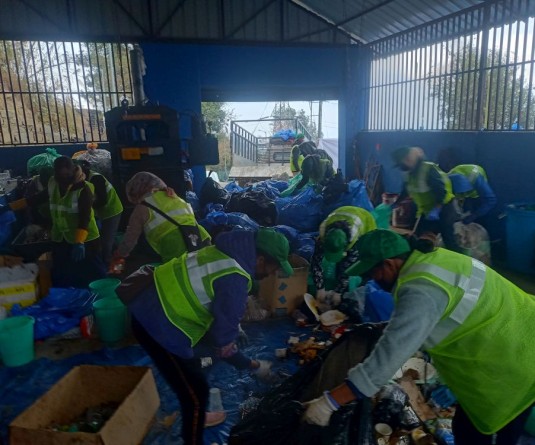Nagaland: With E-Waste increasing, govt aims to streamline their disposal
.jpg)
E-waste materials collected in Dimapur. (Photo Courtesy: e-CIRCLE Dimapur)
Our Correspondent
Kohima | February 16
The increasing growth of Information Communications Technology (ICT) infrastructures in all government departments is also leading to an increase in generation of E-Waste in Nagaland.
With greater reliance on ICT for office automation in daily functioning of government offices, there has also been a increasing number of ICT products and equipment in government offices across the state which are either becoming non-repairable, beyond economical repair or technologically obsolete.
This is primarily due to the fact that the average life period of ICT products or equipment is three years and the same is becoming obsolete depending upon the intensity of usage, serviceability, type of technology and other related factors.
Accordingly, the Department of Information Technology & Communication has issued the Nagaland e-Waste Management Policy, stipulating a set of norms and guidelines in the state of Nagaland to act as a reference point for the disposal of Information and Communication Technology (ICT) related items.
This policy and guideline is applicable to all government departments under the Government of Nagaland, all autonomous bodies, including local bodies under the Government of Nagaland and all PSUs under the State Government.
This was stated in the Annual Administrative Report 2019-20 of the Department of Information Technology & Communication tabled in the assembly here by Chief Minister Neiphiu Rio at the recently concluded NLA session.
The department has also issued guidelines for granting Right of Way (RoW) for installation of telecom infrastructure in the state of Nagaland in light of the fact that telecom connectivity has admittedly become the most crucial infrastructure for transparency and speed in governance, development, security, concurrent monitoring etc, and the only means to overcome the geo-climatic obstacles to communications in the state.
The report stated that these guidelines provide a comprehensive standard and regulation for granting of permission for installation of Telegraph or Telecom infrastructure, both over ground (Mobile Towers, Arial OFC) and underground (Optical Fibre) within the territorial jurisdiction of Nagaland.






